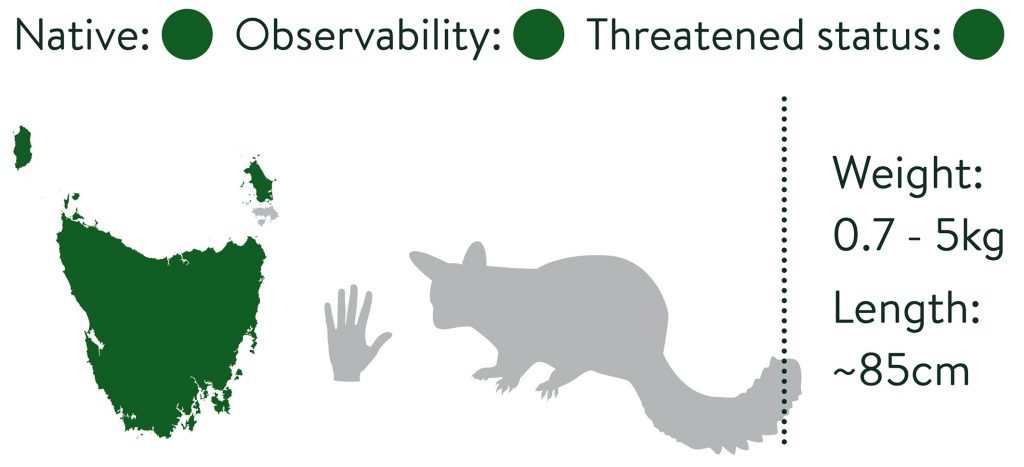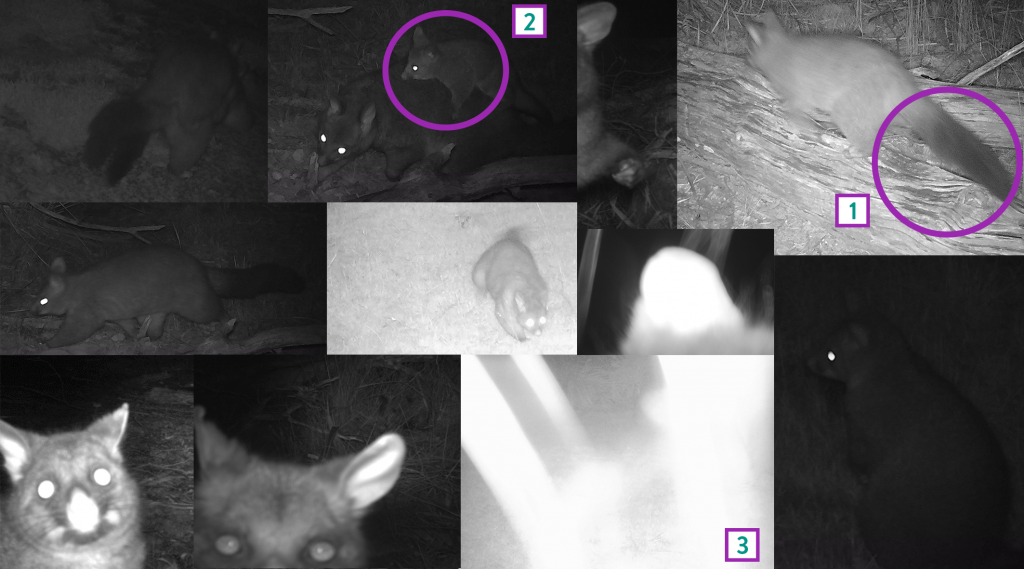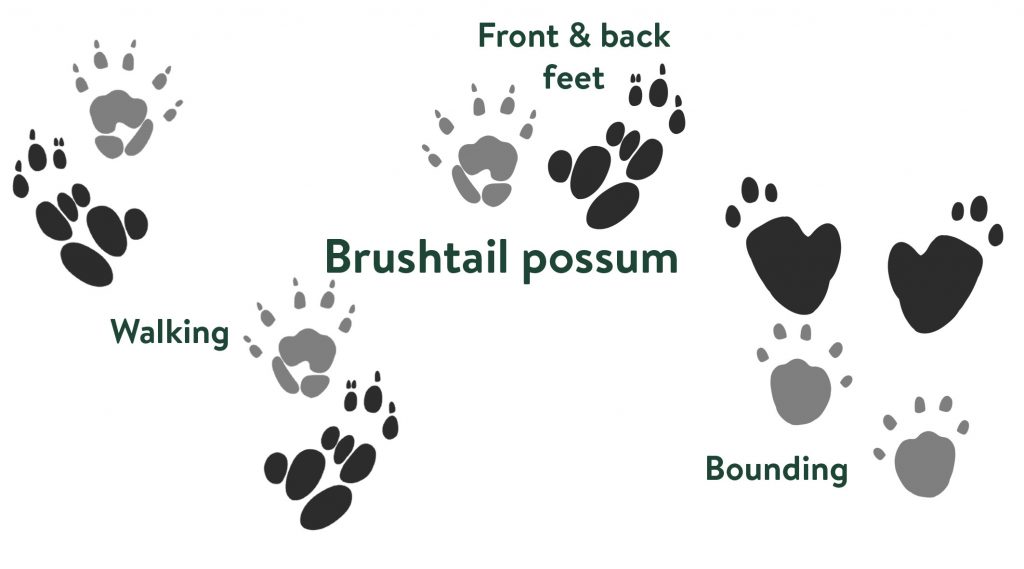Phalangeridae | Trichosurus vulpecula
Common brushtail possums, colloquially known as ‘brushies’, are the most adaptable and familiar of Aussie possums. While there are six subspecies spread across the country, their natural distribution has significantly declined in all states, with the exception of Tasmania where they continue to flourish. Tasmanian brushies are characterised by their larger size, fluffier coat, and a higher frequency of black and blonde colour variations.

Lifestyle
Common brushtail possums are well adapted to living in urban and suburban environments with their opportunistic diet, excellent climbing skills and the ability to use artificial structures like roof cavities and kitchen cupboards as denning sites. This often causes them to come into conflict with people and contributes to a misconception about their widespread prosperity in Australia. In reality, their population has contracted to areas of higher rainfall, resulting in their disappearance from large parts of Western Australia and the Northern Territory.
In natural environments, these mostly nocturnal and solitary marsupials den in tree hollows or logs. Female possums possess two teats inside their pouch but give birth to only one young at any time of the year. In Tasmania, most young are born in May, spending 4-5 months in the pouch and clinging to their mothers for an additional 1-2 months as backyoung. Some lucky possums are known to live for up to 13 years. Possums living in Launceston were found to have nightly movements averaging 300-400 metres, with some males covering impressive distances of over 1.2 kilometres. Home range sizes vary from 2-5 hectares but are strongly influenced by sex, the presence of other possums and the available habitat types.

Key identifying features
Medium-sized marsupial. Thick, bushy and often darker coloured tail (1) but with a naked area underneath and at the tip. Pointed muzzle with pink nose. Large, oval ears. Coat colour can vary from light grey to black, chocolate brown, rufous or golden. Older joeys are carried on the mother’s back (2). Highly inquisitive and most common animal to interfere with the camera. Long whiskers (3) and ears often recorded in close-up.
Similar species
Eastern ringtail possum – smaller body size; tail is long, not fluffy and tapers to a white tip; shorter ears with white patches.
Habitats
Anecdotally, brushtail possums were once more restricted to wet forests in Tasmania. They are now common to all treed habitats including parks and gardens. Interestingly, and again anecdotally, brushies were rarely captured by fur trappers when their skins were highly valuable and ringtail possums were the dominant species. It is hard to imagine such a significant shift in population dynamics…
Diet
Unlike many other Australian possums, the common brushtail is not specialised in its diet. They feed on a variety of foliage, including eucalypts and wattles along with grasses, ferns, flowers, and fruits. While usually referred to as being a generalist herbivore, brushtail possums are known to raid bird nests for eggs and nestlings and may eat more meat than you think!
Threats
Although there are no major threats to the Tasmanian brushtail possum population, they are often the victim of roadkill and disease, specifically Toxoplasma gondii. Additionally, they are commonly at risk of predation by cats and dogs. Brushtail possums are sometimes culled for crop protection and commercially harvested.

